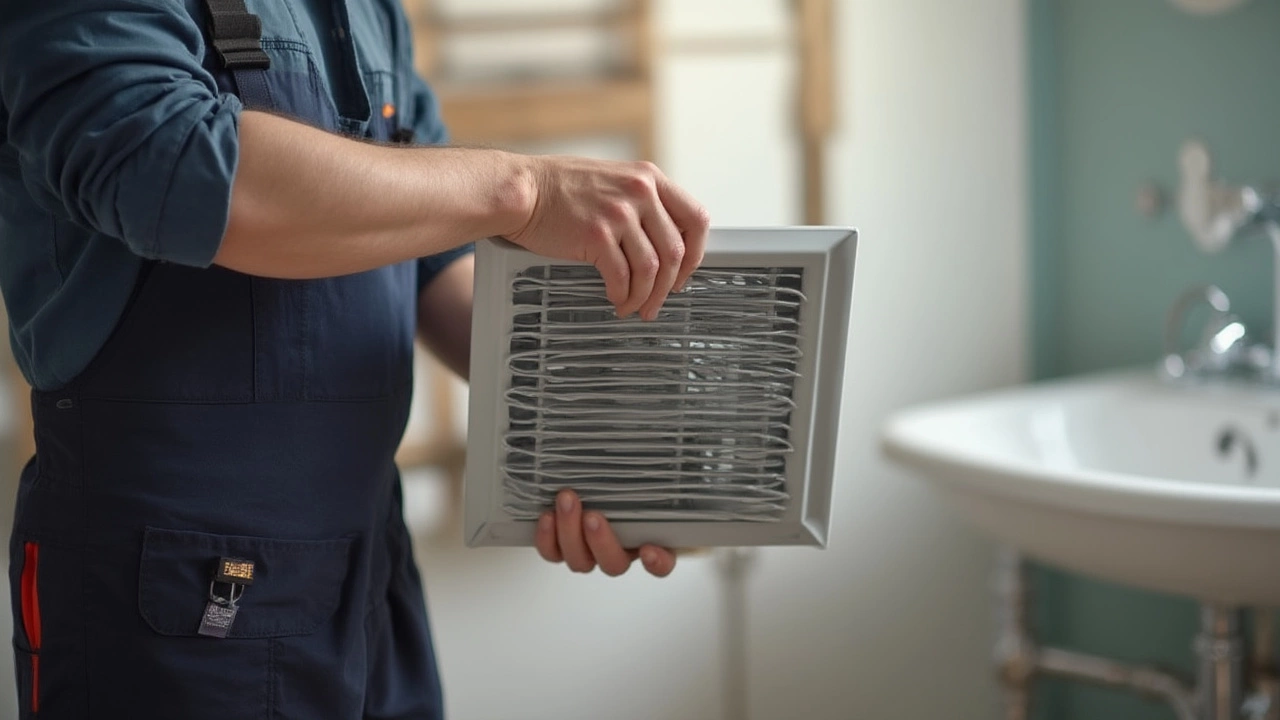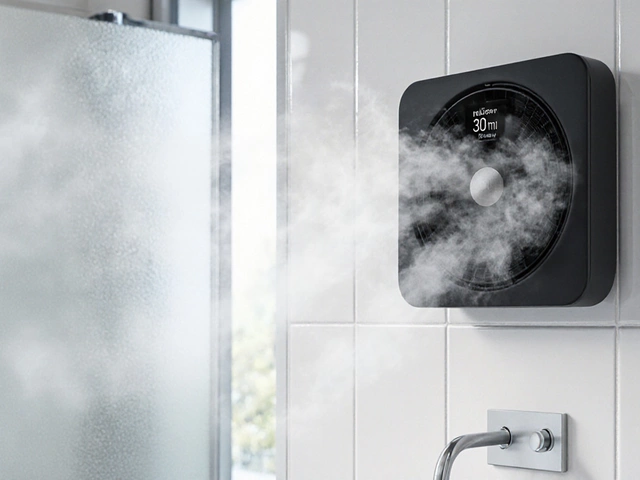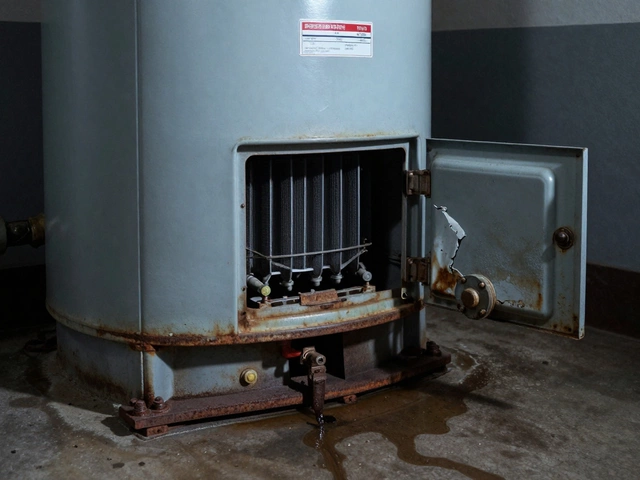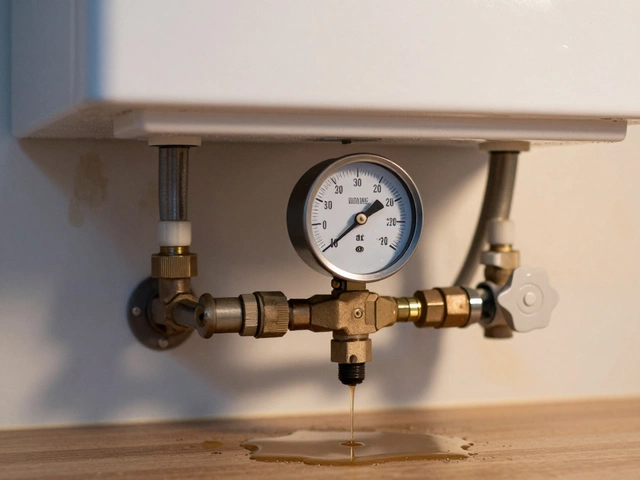Think your bathroom or kitchen air could be fresher? You’re not imagining it—damp air and stubborn smells build up fast here in Wellington’s famously wild climate. Extractor fans do more than kick out steam; they protect your home from mold, moisture damage, and those smells that just don’t budge. But here’s the catch—who actually installs these things? Can any old handyman do the job, or do you need someone with a special certificate? You might be surprised how much goes on behind that grill in your ceiling.
Who Installs Extractor Fans?
It’s easy to think grabbing an extractor fan and slotting it into your bathroom wall is a basic DIY job. But it’s a bit more complicated when you learn most installations involve electrical wiring, careful placement, and sometimes drilling through brick or external cladding. In New Zealand, only licensed electricians are legally allowed to install and wire extractor fans. That’s not just bureaucracy—improper wiring can cause shorts, shocks, or even fire. The Electrical Workers Registration Board (EWRB) sets these rules for a reason, especially since even a small fan needs to be safely connected to the household mains.
You’ll find specialist electrical contractors who regularly install extractor fans—not just for homes, but workplaces, rentals, even commercial kitchens. Some focus only on ventilation, offering advice on fan type and power as well as installation. There are also home improvement companies that partner with electricians to handle the whole job—from buying the fan suitable for your space to cutting and patching holes, sealing gaps, and wiring everything up.
When it comes to extractor fan installation, don’t expect your average plumber or builder to do the wiring (unless they’ve got the right license)—but some handle the ducting or patching where the fan fits. Often, you’ll find a team: the electrician handles wires, and a builder deals with carpentry or wall repairs. Think of it like getting a heat pump installed, but smaller. DIY electrical work is a big no-no in NZ; even if you’re tempted, read your warranty and insurance policies carefully. Home insurance can deny claims after a fire or flood if appliances were unprofessionally fitted. That alone is reason enough to get a pro involved.
Here’s something lots of Kiwis don’t realize: bathroom and kitchen fans aren’t always a “one size fits all” job. You need someone who knows the Building Code—specifically G4 Ventilation and NZS 4303. That means the job isn’t just about plugging in a unit but also ensuring moisture and air get out of the house, not out into the ceiling cavity. A truly skilled installer will also advise on fan size, sound levels (measured in decibels), and ducting length. Poor installation is why some fans just whine loudly and never actually clear the air.
And yes, there are rogue operators—those who’ll say yes to anything or rush the job with the wrong cabling. That’s why checking an installer’s EWRB number is key. In Wellington, you can look up local electricians on the board’s website or use trade directories (like NoCowboys or Builderscrack) that feature reviews and verified businesses. With fans costing from $60 for simple units to north of $500 for fancy, humidity-sensing models, you want someone who actually cares how everything works once the job’s “done.”

What to Know Before You Book an Installer
Okay, so you’re sold on hiring a licensed electrician. What happens next? First step: decide where you need your extractor fan. Kitchens, bathrooms, laundries, and even garages all have different needs. For example, in a bathroom, fans need to clear steam quickly without making everyone feel like they’re in a wind tunnel. A kitchen fan must handle greasy air and can’t just blast that into your loft space, which isn’t code-compliant or safe. The right fan size is based on room volume—the average Kiwi bathroom needs a fan around 90–110 m³/h (cubic metres per hour), but bigger or especially damp spaces may need something more powerful.
Expect your installer to visit, check the existing wiring, and see if there’s a clear path for external venting—big if you have an apartment, brick walls, or heritage weatherboards. Some quirks of classic Wellington homes, like double brick, can make the job trickier (and pricier). If you’re replacing an old fan, the installer will inspect ducting for blockages and leaks. Sometimes they’ll find the old fan was venting straight into the roof cavity—an old shortcut that’s a recipe for hidden rot and black mold. They’ll map a path for a new duct to the outside, maybe through a roof tile or gable wall, which might require a builder or roofer too.
Here’s a tip: measure up your bathroom or kitchen and jot down the room dimensions. When you call a local electrician or ventilation specialist, they’ll want these so they can suggest the right size and type (axial, centrifugal, silent models). Also, check if your place has a ceiling cavity or just a flat roof—that’ll affect fan and duct choice. Will you need a fan with a timer or humidity sensor? Many newer Kiwi homes now use fans with built-in timers or that kick in when humidity rises, so you never forget to run them.
When comparing quotes, ask what’s covered: is the wiring, vent kit, external cover, and repairs to the wall/ceiling included? Get it in writing. If your installer suggests skipping the duct cover, red flag—open ducts invite pests and rain. Also, ask how noisy the fan will be (look for less than 30 decibels for bathrooms), how easy it’ll be to clean, and what the warranty period is. Domestic fans should last 5–10 years with proper care, but poor installs typically cut that in half.
Pricewise, expect to pay $100–$250 for standard supply and install of a basic bathroom fan, and $300–$600 for kitchen-grade gear or trickier fits. Apartment installs can be more expensive, especially if scaffolding or special fireproof ducts are required. A quick check online or a chat with locals on Neighbourly or Facebook groups can point you towards installers with solid reputations in your suburb.
| Type of Installer | What they do | Needed certifications | Typical price (NZD) |
|---|---|---|---|
| Licensed Electrician | Wiring, switch installation, safety check | EWRB electrical license | $150–$600 |
| Ventilation Specialist | Fan selection, ducting, compliance | Usually partners with electrician | $300–$900+ (including parts) |
| Builder/Handyman | Cutting wall/ceiling, patching, ducting | Building practitioner license | $90–$250 (for wall/repairs only) |
Wellington’s building boom shows no sign of slowing. That means long lead times for tradies, so it can pay to plan ahead. Winter is peak season for bathroom and kitchen vent installs, so book in early if possible. Pro tip: ask for a Certificate of Compliance for electrical work—this is your insurance backup if issues crop up later or you ever sell your house.
If you want to save time and hassle, some chain retailers (like Bunnings) partner with vetted installers, but always double check their certificates before anyone touches your wiring. It’s always worth asking for references or online reviews, since a good installer will be happy to talk about their work and successful jobs. Fans aren’t just about fresh air—they’re your best line of defense against rundown insulation, dodgy joinery, and the unique Wellington elements.

Tips for Getting the Best Out of Your Extractor Fan
Just getting a new extractor fan installed isn’t the end. These hardworking little machines need regular attention to do their job. So, what’s next on your to-do list? First off, wipe the fan grill at least once a month. It’s amazing how much dust and fluff piles up, muffling performance and causing extra noise. If your fan is slow or rattly, try vacuuming around the blades with a soft brush (while it’s switched off—no shortcuts on safety).
For kitchen fans especially, greasy build-up is a stealth killer. Most have removable covers or filters you can wash with warm soapy water every few months. It helps keep smells under control and cuts fire risk. Don’t forget to check the exterior vent outside your house now and then—leaves, spider webs, or even birds can block airflow, making your fan work overtime for half the result. Some Wellington homes have external cowls or covers that rattle in the wind; get these checked at least once a year.
If you ever notice condensation forming on walls or ceilings, even with the fan running, or if air isn’t quickly clearing after a shower or cooking session, something’s wrong. Old ducting can sag or split, cutting airflow to almost nothing. Sometimes rodents find their way into ductwork. Getting an annual service is a smart move—many installers offer this for less than $100. They’ll clean, check the electrics, and confirm there are no leaks or blockages.
One overlooked tip—use your bathroom fan for 10-15 minutes after showering, not just during. Every extra minute on means less lingering humidity, which Wellington’s weather turns to mold almost overnight. Humidity sensors help with this, turning the fan on until the air is dry, no guesswork needed. That’s especially useful in rentals, where keeping evidence for bond returns is smart.
Looking at stats, research from BRANZ (the Building Research Association of New Zealand) shows Kiwi homes with well-installed, regularly maintained extractor fans have up to 40% less visible bathroom mold than those that rely on window ventilation alone. That’s a real payoff in fewer asthma triggers and less cleanup. Plus, newer extractor fans are far more energy efficient than those from a decade ago, so you don’t need to worry about power bills spiking—the best use less than 20W per hour running time, which is less than an old lightbulb.
If you want to keep things running sweet, take these steps:
- Clean fan grills monthly and ducts annually.
- Check for unusual noises or weak airflow—these signal clogs or loose mounts.
- Run fans for 10-15 minutes post-shower or cooking, so the space fully dries out.
- Replace fans after 7-10 years, or sooner if you notice significant performance drop.
- Book a professional for all wiring and repairs—never DIY electrical!
And remember, once the weather turns or winter sets in, it’s easy to ignore the steady hum of the extractor fan. But your lungs—and your house—will thank you for keeping on top of both installation and care. Don’t wait until black spots start creeping up the tiles or when windows drip every morning. A small fan, if properly installed and maintained, punches well above its weight in the Wellington weather wars.






